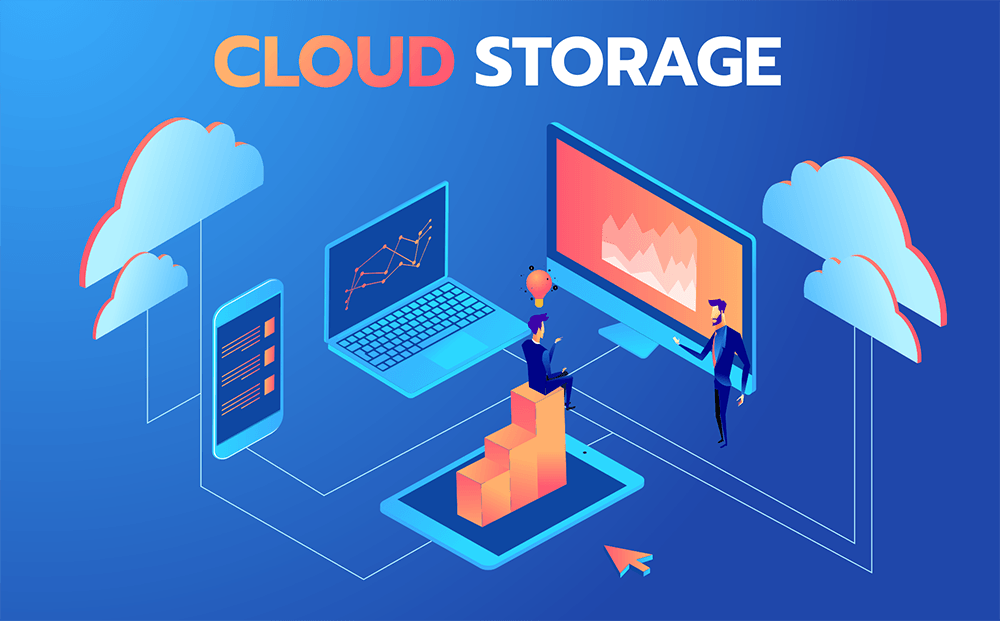For businesses swimming in a sea of digital content, the challenge is not just in creation but in the management of this vast resource. This article takes a deep dive into the art and science of streamlining content management, here’s what you need to know.
Embracing the Cloud

The first step in streamlining content management is embracing cloud storage solutions. The cloud is not just an ethereal space where your files float in digital harmony; it’s a powerful tool for centralizing content. Imagine accessing, sharing, and collaborating on documents from any corner of the globe, at any time. Cloud storage eliminates the need for physical servers within a business, cutting down on costs and increasing the efficiency of content management. This move not only ensures that your digital assets are secure but also readily accessible, making the cloud an essential ally in the quest for streamlined management.
The Art of Delegation
Delegating roles is akin to conducting an orchestra; each member plays a crucial part in the symphony of content management. Businesses can ensure a smooth flow of tasks by assigning specific roles and responsibilities related to content creation, editing, and publishing. Empowering team members by entrusting them with roles that align with their strengths and expertise is essential. This approach enhances productivity and fosters a culture of trust and accountability within the team. This delegation of duties ensures that every piece of content is crafted with precision, from inception to publication.
Analytics Provides the Compass of a Strategy
Content management is not just about keeping things organized; it’s about understanding what works and what doesn’t. Analytics provides a window into performance, offering insights into user engagement, reach, and the overall effectiveness of strategies. By analyzing data on how it is consumed, shared, and interacted with, businesses can make informed decisions about future creation and distribution. This data-driven approach allows for the refinement of strategies, ensuring that efforts are aligned with audience needs and preferences.
Implementing analytics tools within content management systems enables businesses to track performance in real-time, turning data into actionable insights. With analytics as a guide, the path to a successful strategy becomes more apparent, helping businesses confidently navigate the complexities of the digital content landscape.
Collaborative Platforms

These platforms provide a shared space for team members to work together on content, regardless of their physical location. The ability to collaborate in real-time, share feedback instantly, and track changes and progress on projects facilitates a more dynamic and efficient workflow. Collaborative platforms also encourage a culture of transparency and open communication, ensuring that everyone involved in the process is on the same page.
Additionally, these platforms eliminate the need for cumbersome email threads and disjointed file-sharing methods by centralizing communication and project management. The result is a more cohesive team environment where ideas flow freely, and content can be produced, reviewed, and published more swiftly. As businesses embrace these collaborative tools, the barriers to effective management begin to dissolve, paving the way for a more integrated and productive approach to managing digital content.
Automating the Mundane With AI and Machine Learning
Artificial Intelligence (AI) and Machine Learning (ML) technologies have revolutionized how businesses approach management, automating processes such as tagging, categorization, and content creation. By employing these cutting-edge technologies, businesses can free up valuable human resources, allowing team members to focus on more strategic and creative tasks.
AI-driven tools can analyze large volumes of content quickly, identifying patterns and insights that would be impossible for humans to detect at the same scale. This not only improves the accuracy of content categorization but also enhances the personalization of content for different audiences. The integration of AI and ML into content management systems transforms the landscape, making the process smarter, faster, and more scalable.
Mobile Optimization

In a world where the majority of internet users access content through mobile devices, mobile optimization is no longer optional; it’s imperative. Ensuring that content is easily accessible and navigable on smartphones and tablets is crucial for reaching and engaging today’s audiences. This means adopting responsive design principles, optimizing loading times, and considering the mobile user experience in every aspect of content management.
By prioritizing mobile optimization, businesses can ensure that their content is seen as interactive and engaging on any device. This approach broadens reach, catering to the on-the-go lifestyle of modern consumers and ensuring that management strategies are aligned with current digital consumption habits.
Security Measures to Protect Your Digital Assets
As businesses put more information online, the risk of data breaches and unauthorized access increases. Implementing robust security measures within content management systems is essential to safeguard digital assets. This includes encryption, access controls, and regular security audits to identify and mitigate vulnerabilities. Educating team members about security best practices is also critical, as human error remains one of the largest threats to digital security. By prioritizing security, businesses can protect their content from cyber threats, ensuring that their digital assets remain secure and their reputation intact.
The Digital Filing Cabinet

Imagine entering a room filled with documents, photos, and videos scattered everywhere. Now, imagine trying to find a single file in this chaos. This is what it feels like to manage content without a structured storage solution. The digital filing cabinet approach categorizes and tags content systematically, making it easily searchable and retrievable.
By implementing a hierarchical structure, complete with folders and subfolders, businesses can create a virtual filing system that mirrors the organization of a traditional filing cabinet, but with the speed and efficiency that digital technology provides. Using a robust content workflow platform can help you easily create a well-organized digital filing cabinet. This structured approach saves time and reduces the frustration of sifting through disorganized digital clutter.
These strategies offer a roadmap to transforming management from a daunting challenge into a strategic advantage. Staying ahead in business means continuously adapting and refining these strategies to meet the changing needs of audiences and the technological advances that drive our world forward.







